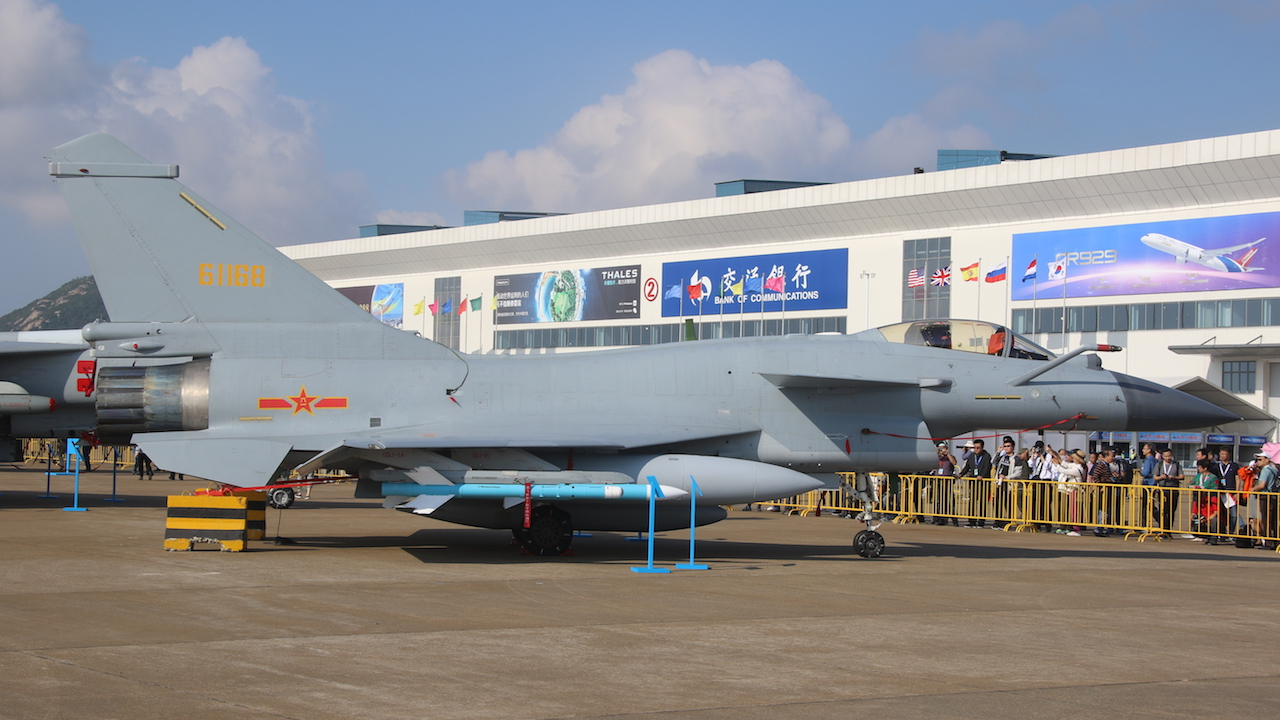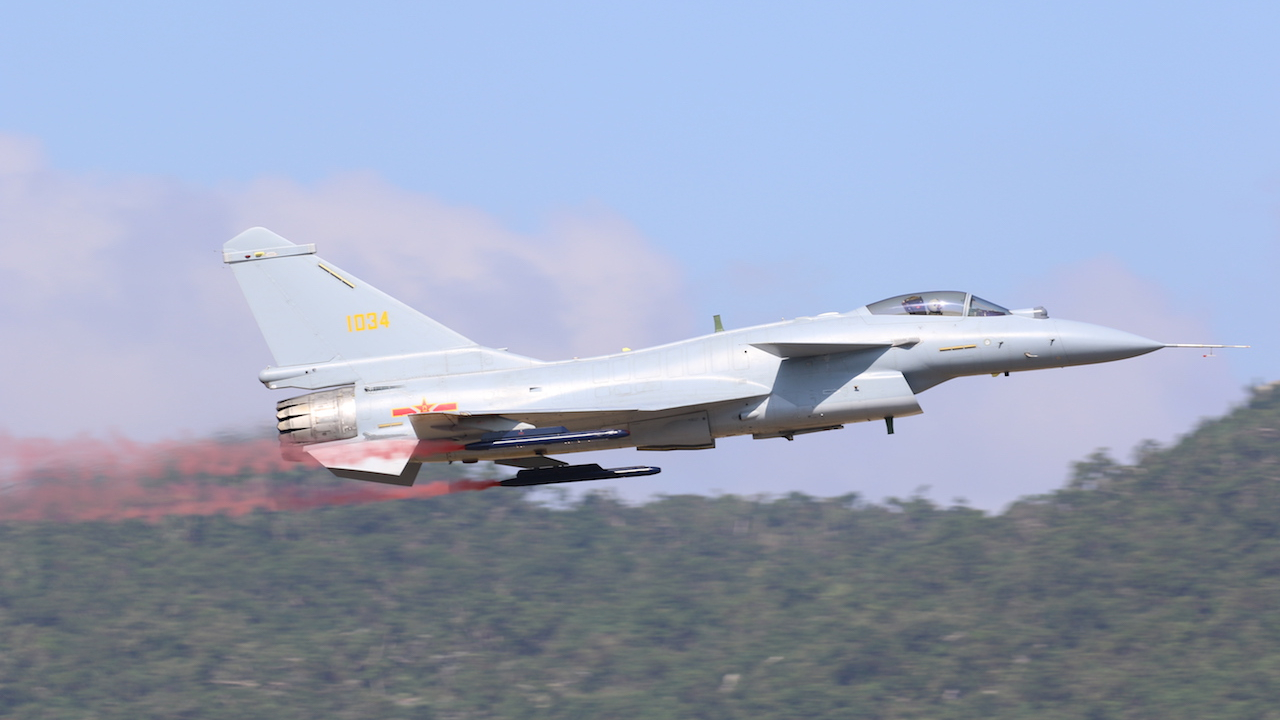Egypt’s Chinese J-10CEs threaten F-16s future
Just when you think the Egyptian Air Force fighter force could not get any more diverse, it has reportedly taken delivery of its first Chinese Chengdu J-10CE fighters, reports Alan Warnes.

The J-10 is set to ramp up the EAF’s capabilities, that have been left behind with the USA’s reluctance to modernise its fleet of around 200 F-16s. IMAGE: Alan Warnes
Last September, at the Egypt International Air Show, reports emerged that the EAF was set to acquire the Chinese J-10CE although neither CATIC or the EAF would confirm this. It has been suggested that the J-10CE in the static display at Zhuhai Airshow in November last year was actually Egyptian.
The fourth-generation fighter could bring a lot of new capabilities, with more advanced weapons.
The real deal-maker is that China would probably loan the finances for such an extremely-capable combat aircraft equipped with the KLJ-10 AESA radar, the Chinese PL-12 (export version of SD-10) air-to-air missile with a range of 35-45 miles, and the impressive and potent PL-15 with a dual-pulse rocket motor that China claims gives the missile a range of 100+ miles.
Being armed with these weapons will ramp up the EAF’s capabilities and could pose a threat to several countries in the region.
It’s unclear how many J-10CEs are to be purchased, but the survivors of the 42 F-16A/Bs acquired in from 1982 and the 16 Mirage 2000s could be targets.
Egypt has acquired Chinese fighters in the past – Shenyang F-6, Chengdu F-7 as well as K-8 Karakoram jet trainers, so the EAF is accustomed to the Chinese logistics and maintenance systems
The EAF has taken delivery of 220 US-built Lockheed Martin F-16s, 53 French Dassault Rafale F3-Rs, 50 Mikoyan MiG-29M/M2s and 16 Mirage 2000BM/Ems.
The logistics of operating such a diverse range of combat aircraft must be a real challenge that would usually be frowned upon by air force leadership, but procurement in Egypt is clearly led by president Abdel Fattah El-Sisi.
With little budget to procure aircraft, the Egyptian government relies on grants, loans or aid from its allies. Last year the US government funded Egypt with $1.3 billion, under the 1978 Israel-Egypt Peace Accord. China will undoubtedly do the same, as it increases its presence in Africa.
Modernisation of its fighter fleets is a priority because of the lack of capability on the F-16s and the Mirage 2000s. Between 1982-2015, 42 F-16A/Bs and 178 F-16C/Ds were delivered through Foreign Military Sale Peace Vector I-VII programmes, but they have never been upgraded with any smart weapon capability much to the EAF’s frustration.
They can’t use the joint direct attack munition (JDAM), AIM-9X Sidewinder, AIM-120 advanced medium-range air-to-air missile (AMRAAM) or Sniper targeting pods because the F-16s are still operating a less-capable AN/APG-66 and inferior versions of the AN/APG-68 radars. There have been reports of upgrades on offer, but this is not believed to have happened.
Egypt was all set to purchase 30 Sukhoi Su-35s under a $2 billion contract signed in 2018. Several were seen at Sukhoi’s Komsomolsk on Amur facility, in the wake of the deal, but deliveries never took place because the US announced in 2019 it was ready to impose sanctions under the Countering America’s Adversaries Through Sanction Act (CAATSA) that would have seen the withdrawal of US security assistance funding valued at more than $1 billion annually to Egypt. Instead the Su-35s bound for Egypt are now heading to Iran.
In the past, there has been intense speculation the EAF was going to buy 24 Eurofighters in June 2022. The contract, said to be worth about $3 billion as part of a bigger arms deal, valued at between $10-12 billion brokered by Leonardo, would have also included 24 M-346 jet trainers. The deal was never signed, and subsequent discussions with industry have revealed it never really got closed to being signed off.
Flying cutting-edge Dassault Rafales and Chinese J-10CEs without any ITAR issues, funded by the governments of both countries in loans, is certainly a good option for a nation that has clearly got enemies. Turkey and Qatar both supported the Muslim Brotherhood which was expelled from Egypt in 2013 after being elected two years earlier. Then there is Iran, and in the past Israel.
Stay up to date
Subscribe to the free Times Aerospace newsletter and receive the latest content every week. We'll never share your email address.

